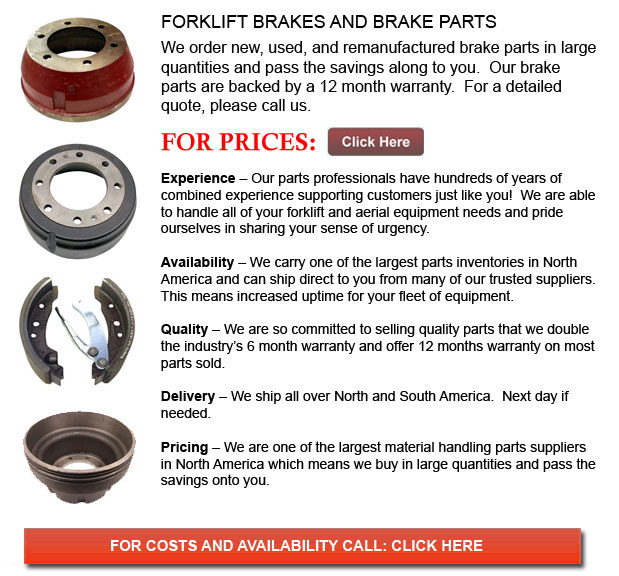
Forklift Brake - A brake drum is where the friction is supplied by the brake pads or brake shoes. The pads or shoes press up against the rotating brake drum. There are a few other brake drums kinds with particular specific differences. A "break drum" would usually refer to whenever either pads or shoes press onto the interior exterior of the drum. A "clasp brake" is the term utilized to describe if shoes press next to the exterior of the drum. One more type of brake, referred to as a "band brake" makes use of a flexible belt or band to wrap around the exterior of the drum. If the drum is pinched in between two shoes, it can be referred to as a "pinch brake drum." Similar to a typical disc brake, these kinds of brakes are somewhat uncommon.
Old brake drums, prior to the year 1995, needed to be constantly adjusted to be able to compensate for wear of the shoe and drum. "Low pedal" could cause the needed adjustments are not carried out sufficiently. The motor vehicle can become hazardous and the brakes can become ineffective if low pedal is combined together with brake fade.
There are different Self Adjusting Brake Systems available, and they could be categorized within two major kinds, RAI and RAD. RAI systems have built-in tools that prevent the systems to recover whenever the brake is overheating. The most popular RAI makers are Bendix, Lucas, Bosch and AP. The most famous RAD systems include Volkswagen, VAG, AP, Bendix and Ford recovery systems.
Self-repositioning brakes usually use a tool which engages just when the motor vehicle is being stopped from reverse motion. This stopping approach is satisfactory for use where all wheels utilize brake drums. The majority of vehicles nowadays utilize disc brakes on the front wheels. By operating only in reverse it is less likely that the brakes will be applied while hot and the brake drums are expanded. If adjusted while hot, "dragging brakes" can take place, which raises fuel expenditure and accelerates wear. A ratchet device which becomes engaged as the hand brake is set is another way the self adjusting brakes could work. This means is just appropriate in applications where rear brake drums are used. If the parking or emergency brake actuator lever exceeds a particular amount of travel, the ratchet improvements an adjuster screw and the brake shoes move in the direction of the drum.
Located at the base of the drum sits the manual adjustment knob. It can be tweaked making use of the hole on the opposite side of the wheel. You would have to go underneath the vehicle utilizing a flathead screwdriver. It is very vital to adjust each and every wheel equally and to move the click wheel properly for the reason that an unequal adjustment may pull the vehicle one side during heavy braking. The most effective way so as to make sure this tedious task is accomplished safely is to either raise every wheel off the ground and hand spin it while measuring how much force it takes and feeling if the shoes are dragging, or give every\each and every one the exact amount of manual clicks and then do a road test.
![]() Click to Download the pdf
Click to Download the pdf
Forklift Parts
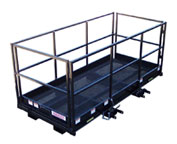
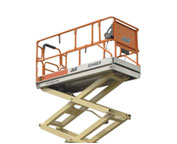
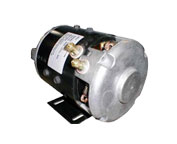
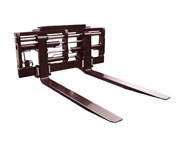
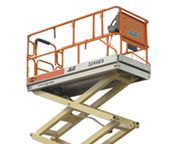
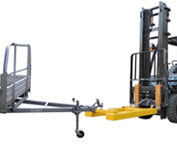
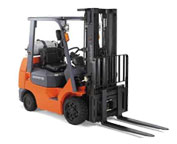
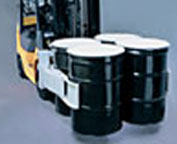
Lift Parts Express
TOLL FREE: 1-888-695-7994
LOCAL: 361-360-3802
2732 S PADRE ISLAND DR 240
Corpus Christi, Texas
forkliftpartscorpuschristi.com
Email Us
About Us


